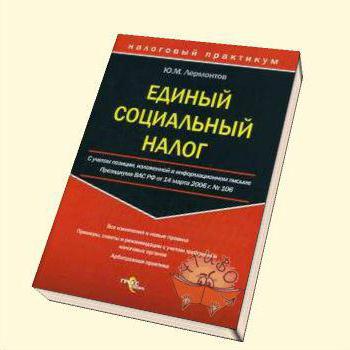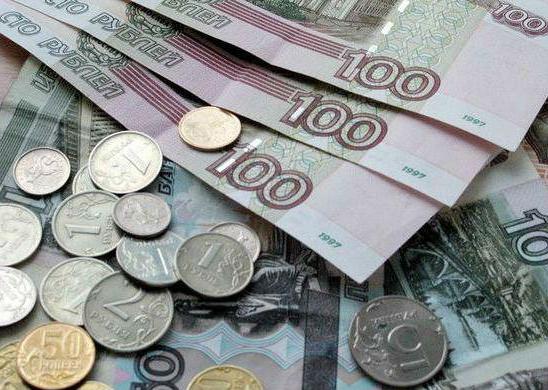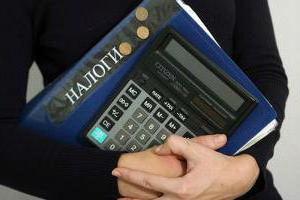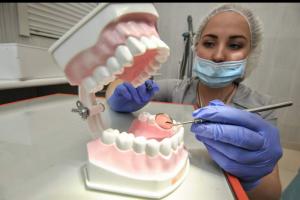Interest in this tax, which has not been “working” in the Russian tax system since 2010 (repealed by Law 212-F3 of July 24, 2009), was recently fueled by a report from Interfax citing a government source about its possible remake in 2015.  We tried to bring to your attention the essence of the single social tax, its calculation methodology, existing optimization and tax evasion schemes.
We tried to bring to your attention the essence of the single social tax, its calculation methodology, existing optimization and tax evasion schemes.
Payers of the unified social tax of the Russian Federation
By its economic nature, this tax is economically preferable than separate social payments, its components. Recall its main economic characteristics, based on the provisions of the non-working part of Part II of Chapter 24 of the Tax Code of the Russian Federation since 2010. Indeed, apparently, it, with some changes introduced this year, will soon regain relevance.
The Unified Social Tax (UST) in terms of timeliness and completeness of payment is controlled by tax authorities. It does not include social security accident payments.
His payers are:
- Entrepreneurs, organizations and enterprises that pay wages to individuals working under labor and civil law contracts;
- Citizens who independently carry out labor activities (except for "Simplists").
Do not pay this individual entrepreneurs tax enterprises, organizations working within special tax regimes. The traditional economic sectors of the indigenous peoples of the North, individual farming and peasant farms were exempted from it.
Composition of tax, frequency of payment and reporting
The components of the unified social tax are three contributions of social insurance of citizens:
- to the Pension Fund of the Russian Federation;
- to the Social Insurance Fund of the Russian Federation;
- to the federal and territorial funds of compulsory medical insurance.
The frequency of payment is a month. Tax period year is considered. Reporting periods - quarters.
Actual payment is made until the 15th day of the month following the reporting one. The report, which shows the amount of the accrued unified social tax of insurance premiums, the payer submits to the tax authority until the 20th day following the reporting month.

Funds are transferred by UST payers to the personal accounts of PF, FSS and FOMS open in the federal treasury.
On a quarterly basis, in the month following the expired quarter, employers-payers of the unified social tax submit a report to the Social Insurance Fund in the prescribed form, which takes into account:
- the amount of the single social tax;
- total amount accrued to the FSS;
- used funds for sick leave, pregnancy and childbirth, for childcare up to one and a half years; to reimburse the cost of burial services, etc.
The base rate ranges from 26% to 36%.
Thus, the object of taxation for UST is payment under employment contracts, as well as remuneration under contracts of a civil law nature.
There is a list of payments to staff that are outside the tax base for the calculation of UST:
- benefits and compensations not subject to income tax of individuals;
- compensation for unused leave paid upon dismissal;
- contributions for health insurance employees paid by the employer (relevant for insurance contracts for up to one year);
- personal insurance payments in case of injury or death.
Practice has shown the positive potential of tax in economic regulation and in filling the budget.
More on the ESN remake
What changes in tax payment are expected for legal entities and individual entrepreneurs who will pay a single social tax in 2015? We list them:
- within the general consolidated tax rate (30%), the current levels of payments are expected to remain in the PF, FSS, FOMS;
- injuries rates will remain the same;
- the maximum amount of payments in the Pension Fund will be 711 thousand rubles, in the FSS - 670 thousand rubles. (the limit on payments to the MHIF will not be set);
- employer payers (single social tax) the contribution is calculated in kopecks, that is, without rounding;
- expected changes in the rules for offsetting contributions for different types of insurance within the competence of one authority;
- will increase to 5965 rubles. (according to the minimum wage) a fixed payment.

Forecasted, even in 2015, a change in the UST rate is expected. The main factor in this dynamic may be the annual indexation of pensions. Also, a change in the UST rate will most likely be initiated by the already begun reform of the health system.
The economic nature of tax
A return to the UST does not mean Russia's choice between the American and European financial systems. Rather, it is a step towards reforming the social insurance system of Russian society.
It’s not even a matter of banal logistics: combining three social payments into one. After all, the expected size of a single social tax will not change deductions to social funds.
The Government of the Russian Federation has not once discussed the problem of the balance of pensions. The relevance of UST increases if the existing pension system refuses to use the mechanism of partial mandatory pension accumulation.
The economic potential of the tax considers the use of its rate in the interests of simultaneously balancing the pension system and stimulating the development of enterprises.
About calculation of the unified social tax
Publications of auditors indicate that a single social tax fulfills the function of economic regulation. The percentage (tax rate) is regressive.
For employers it becomes profitable to pay salaries to employees with an annual fund of more than 280 thousand rubles. In this case, the UST rate is more than halved! Regression of the tax rate is maintained if the employee quit his job and was accepted back within one month.
For the convenience of readers, we will compactly present the formulas by which the single social tax is calculated for the main categories of employers, as provided for in Chapter II of the 24 Tax Code of the Russian Federation (where ZS is the salary of employees, UST is the required amount of the single social tax).
| Salary of employees (ЗС) - basic rate 26% | ||
| Not higher than 280 thousand rubles. | 26% | UST = AP * 26% |
| Above 280 thousand rubles. | Regressive (see formula) | UST = 280,000 * 26% + (AP - 280,000) * 10% |
| Agricultural producers and enterprises of northern folk crafts - 20% rate | ||
| Not higher than 280 thousand rubles. | 20% | UST = AP * 20% |
| Above 280 thousand rubles. | Regressive (see formula) | UST = 280,000 * 20% + (AP -280,000) * 10% |
| Businesses in the free economy. zones - rate of 14% | ||
| Not higher than 280 thousand rubles. | 14% | UST = AP * 14% |
| Above 280 thousand rubles. | Regressive (see formula) | UST = 280,000 * 14% + (AP - 280,000) * 5.6% |
| Above 600 thousand rubles. | Regressive (see formula) | UST = 57 120 + (AP - 600,000) * 2% |
| Individual entrepreneurs - 10% rate | ||
| Not higher than 280 thousand rubles. | 10 | UST = AP * 10% |
| Above 280 thousand rubles. | Regressive (see formula) | UST = 280,000 * 10% + (AP - 280,000) * 3.6% |
| Above 600 thousand rubles. | Regressive (see formula) | UST = 280,000 * 10% + (AP -600,000) * 2% |
| Lawyers and notaries - 8% rate | ||
| Not higher than 280 thousand rubles. | UST = AP * 8% | |
| Above 280 thousand rubles. | Regressive (see formula) | UST = 22,400 + (AP - 280,000) * 3.6% |
| Above 600 thousand rubles. | Regressive (see formula) | UST = 33 920 + (ЗС -600 000) * 2% |
| IT segment enterprises - 26% | ||
| Not higher than 75 thousand rubles. | UST = AP * 26% | |
| Above 75 thousand rubles. | Regressive (see formula) | UST = 19,500 + (AP - 75,000) * 10% |
| Above 600 thousand rubles. | Regressive (see formula) | UST = 72,000 + (AP - 600,000) * 2% |
However, the regression mechanism of the unified social tax requires further improvement, although it has been developed quite carefully. For example, the following situation is provided by him.
As you know, the dynamic development of a business is characterized by the transfer of an employee from one unit of the company to another. It is positive that at the same time the regressive tax rate remains valid even if the transfer is made to a unit that has a separate balance.
For example, we indicate a bottleneck in taxation.Unfortunately, maintaining the regressive rate during the reorganization of the enterprise (merger, spin-off, separation) according to the existing judicial practice is controversial.
The reason is that the reorganized legal entity, according to paragraph 2, Article 51 of the Civil Code of the Russian Federation, forms its tax base (including the unified social tax) starting from the moment of its state registration.
In the further presentation, we will consider the single social tax of the Russian Federation both from the point of view of the existing positive and negative taxation practices, and we will consider ways to improve it.
Qualification of ESN optimization schemes by the FSN
Why, after all, in the Russian Federation this tax was canceled in 2010? Indeed, it is clear that, purely technically, it is more convenient for the employer to pay a single social tax than to make insurance payments to pension, social insurance funds, MHIFs of the federal and municipal levels separately.
Experts say that there are two reasons for the cancellation. Firstly, the imperfection of the taxation mechanism (according to preliminary information from Interfax, the returned unified social tax of the Russian Federation will be levied by a new unified specialized fiscal body created within the framework of the Federal Tax Service). Obviously, this step will be taken to prevent all sorts of evasions from the payment of UST.

Verification of compliance by the payer employer tax payment procedure and the absence of "envelope schemes" optimizing UST taxation will be made by tax authorities. In this case, fundamental attention will be paid to the presence of a business goal in the actions of the payer, as well as to the presence of artificial, that is, fictitious transactions. Qualification of the enterprise, according to Art. 45 of the Tax Code of the Russian Federation, is the starting point for the audit tax audit of any employer.
Unlawful unified social tax optimization schemes
Is ESN optimization possible? I guess, yes. However, excessive aggressive creative activity is fraught with zero tolerance of tax authorities. We are talking about UST evasion schemes related to:
- insurance
- transferring employees to the category of persons with disabilities;
- using a non-resident company;
- compensation for delayed salaries;
- student agreement;
- bonus scheme.
Briefly describe the above schemes, which are opened and punished for them - the duty of the Federal Tax Service.
- Insurance scheme. The organization insures employees for an extremely rare insured event. Workers get a loan from the bank and pay as insurance premiums. On the same day, the loan is immediately repaid by the insurance company to prevent the occurrence of material benefits. Workers receive income from an insurance company.
- Scheme with disabled workers. Employees quit the company and at the same time find a job in a director-controlled branch of a public organization (organization of public disabled people). OOI and the enterprise sign a contract. For this agreement, the company pays an amount equivalent to the work of employees who have been laid off (paragraph 2 of Article 238 of the Tax Code of the Russian Federation has been used).
- Scheme associated with a non-resident company. The latter is registered in the offshore zone. The staff of the resident enterprise is transferred to it, while actually working in the same place. Since a foreign company is not a payer of this tax, a single social tax is not paid to the budget.
- Scheme associated with the improper conclusion of a student agreement. For the duration of the contract, in accordance with Art. 198 of the Labor Code of the Russian Federation, UST is not paid.
- Bonus scheme. The founder of the enterprise - a company with a shareholding of more than 50% - transfers funds to the enterprise for its core business. The funds received are paid by the enterprise to its employees as gratuitous assistance. This scheme, in addition to the UST, also contributes to tax evasion and VAT.
Optimization schemes challenged by the FSN
The second group of schemes is conducted according to the methodology of the Federal Tax Service audit as evasion of UST, however, federal legislation does not contain their direct prohibition. We will name three schemes of this kind:
- autosourcing;
- dividend;
- associated with harmful working conditions.
The essence of the autosourcing scheme is the dismissal of employees and their placement in a company-agency that operates on a simplified scheme. An autosourcing agreement is concluded between the two companies. The agency sends employees to the company and pays for their work.

- Dividend scheme. The managers of the main company establish a joint stock company. Profit is withdrawn to this AO and distributed.
- Scheme associated with harmful working conditions. In the appendix to the collective agreement — the labor protection agreement — compensation is paid to employees for harmful working conditions. The union draws up an examination of jobs by an act. After certification of workplaces, personnel working for them are paid non-taxable UST compensation (Article 219 of the Labor Code, clause 2, Art. 238 and clause 3, Article 217 Tax Code).
The above schemes require the correct mechanism for their use. They will obviously fall under the control of a tax audit. However, if their application is really appropriate, then in the act of verification they will not become a source of tax surcharges for UST.
Schemes relevant to tax audit procedures
The third group consists of models of legitimate UST optimization; we will name three of them:
- company work with individual entrepreneurs as employees;
- salary payment in the form of rental payments;
- selling goods to employees.
The first model involves the registration of an employee by a private entrepreneur, a "simplist." A civil law contract is concluded with him. Individual entrepreneurs pay half the single tax instead of UST.

The second model is positioned with a lease agreement by the enterprise for the employee’s property (usually a car or computer). According to paragraph 1, Article 236 Tax Code, the payment of a single social tax in this case is not made.
The third model is characterized by the purchase of an enterprise product from an employee. For example, pictures. According to paragraph 1, Article 236, such payments are also not included in the UST tax base.
Conclusion
For a developing and emerging economy, the strategic issue is to reduce the tax burden.
Sustained progress and well-being of the nation are possible with a significant reduction in the fiscal burden on small and medium-sized businesses. In particular, the reduction of the UST rate in the tax system of the Russian Federation to 20% would be a significant factor contributing to the detailing and development of small and medium-sized businesses. A single social contribution is more sensitive specifically for small enterprises and entrepreneurs. For them, it creates high costs (up to 40% of the wage fund), at the same time, its burden on large businesses is significantly lower: 15-18%.
In addition, in the tax under consideration with the development of the domestic market of Russia, one should see a budget-forming perspective.
In balanced economies, a single social tax makes up a significant share of total tax revenue. For example, its share for Japan is 38%, for Germany - 37%, for the UK - 18%, for France - 41%.








